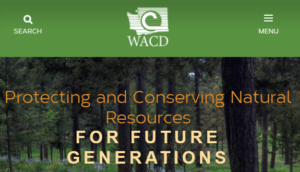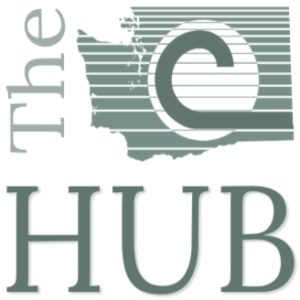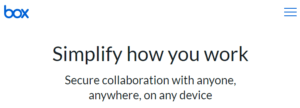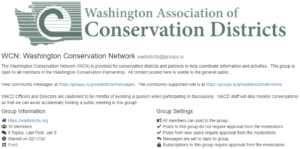The Washington Association of Conservation Districts utilizes a variety of tools to help keep our members and partners informed and to help build a stronger community. This article summarizes those tools to give you a better idea of which ones you may wish to utilize.
Why?
Why online tools?
With 45 member conservation districts and hundreds of people working across Washington’s diverse and amazing landscapes, it can be difficult to communicate information and coordinate activities. We use online tools to make information more easily available and to help keep people on the same page when working together.
Why multiple tools?
Not everyone takes in information in the same way. We also have multiple generations of people in our conservation community, and intergenerational communications can be fraught with difficulty.
Cost is always an issue. As a member-supported association, we are constantly striving to do more with less. The list of services below demonstrates that we have made a choice to save money. A better solution might be to purchase an association management system (AMS) where member-focused content is housed, where board and committee meetings are coordinated and memorialized, where projects are managed, and more, all behind a single interface. But an AMS is costly. Instead of going that route, we use several independent services. By doing so, we save money, albeit at the risk of creating confusion.
These are some of the reasons we use several tools. It is important to recognize that we do not expect every member and partner to use all of these tools. Pick what works for you from the menu of choices below.
The tools we use
Two websites
Public-facing website
 Link: https://wadistricts.org
Link: https://wadistricts.org
Our main website was developed to better present why WACD and member conservation districts are important and to describe what those entities do.
Over time, we published more and more information there that was intended for member districts and partners, not the general public. Doing so has made the site more confusing to infrequent visitors like citizens, agency staff, and legislators. This is not the site to go to for content intended for members and partners.
Member-focused website
 Link: https://wadistricts.us
Link: https://wadistricts.us
As we realized that our messaging had become muddy by trying to pack information for different audiences into one website, we chose to build a hub to bring together information of interest to members and partners. We call it the Hub.
The Hub brings together current news, community-authored articles, events, and key downloads. You’ll find access to WACD board members and staff plus be able to download the most recent edition of the District Directory.
If you are a WACD member or partner, you should bookmark the Hub and visit often. You’ll find meeting announcements and a wide range of content, categorized to make it easier to find the information you are most interested in.
Interactive group systems
Groups.io email group
Link: https://groups.io/g/wadistricts
An email group through Groups.io is available for members and partners who want to send messages to the group of subscribers. We call this the Washington Conservation Network. This is a low-volume group that may appeal to those who prefer email as a communication tool. It may see increased use in the future.
The purpose statement on the Groups.io reads as follows: The Washington Conservation Network (WCN) is provided for conservation districts and partners to help coordinate information and activities. This group is open to all members of the Washington Conservation Partnership. All content posted here is visible to the general public.
Slack
 Link: https://washingtoncon-fyi9608.slack.com
Link: https://washingtoncon-fyi9608.slack.com
Slack is often viewed as a real-time chat tool (which it is) but posts in Slack are made in topical channels that become searchable. In this way, information can be more easily found. Slack tends to appeal to those who instant communications and who have frequent access to a computer or smartphone.
Slack doesn’t sound like a work-oriented name but, in keeping with computer programming tradition, it is actually an acronym. Slack means searchable log of all communication and knowledge.
The Washington Conservation Society worked with WACD to form a Slack account to help connect community members on work-related issues.
Slack says: Channels bring order and clarity to work — you can create them for every project, topic, or team. When there’s a channel for everything, you can focus on the conversations and work that matters most to you.
Email is a one-to-one and one-to-many communication tool. Unlike the Groups.io group or the Slack account, email does not create a group archive. Information contained in emails is easily accessible only by the sender and recipient. Nevertheless, because of its ease of use and its relative reliability, email has become the most common form of electronic communication between people.
Additional tools
There is always something new becoming available. For example, people managing projects may choose to use systems like Basecamp, Trello, or Wrike to help communicate important steps or tasks to a group of people.
Box.com
 Link: https://www.box.com/home
Link: https://www.box.com/home
We use Box.com to make Board meeting files more easily available and create an archive of past meetings. Publishing that information on Box is generally more reliable than using a typical website for that purpose. The Box service also includes built-in file viewers which means that visitors do not need to have word processing or spreadsheet applications installed in order to view the documents.
Freedcamp
 Link: https://freedcamp.com/
Link: https://freedcamp.com/
WACD has a nonprofit account on Freedcamp – a project management tool – that we have used lightly for managing specific projects. For example, we used this to help capture tasks related to developing WACD’s annual plan. This tool is likely to see more use as the level of WACD committee work increases.
Freedcamp’s tag line is: Free Effortless Collaboration for Teams
Which tools should you use?
For the general public
If you are a member of the general public, the one place to go is to our public-facing website at https://wadistricts.org. There you will find information about WACD, who we are, how we operate, and contacts.
For our member conservation districts and partners
All other tools are focused on providing the information you need from WACD.

